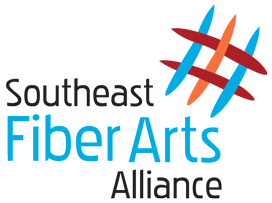Crochet
Crochet fabric is formed by interlocking looped stitches created with a single thread and one hooked needle.
Historians disagree on where or when crochet originated, but the word comes from croche, an old French word for hook. Mademoiselle Riego de la Branchardiere, known as the mother of crochet, wrote the first crochet pattern in 1829, and the technique came to the US in the 1840s when Irish women immigrated to escape the potato famine.
Crochet creates a dense fabric with minimal tools and supplies. It is a quick, flexible technique that allows you to make all sorts of shapes and patterns - even 3D models of mathematical concepts!
Keep reading for your introduction to the world of crochet! Hint: Use the links in the header above to jump to the sections you're most interested in.
Materials and Tools:
- Crochet hooks come in a wide range of materials and sizes. They are measured in millimeters (mm), but also have a corresponding letter from the alphabet and/or number (US size). This table from the Craft Yarn Council shows the relationship between the two size systems.
- The yarn you choose (size and fiber content) determines whether your project will be washable, delicate or sturdy, shiny or matte, or … Use this table from the Craft Yarn Council to compare standard yarn weights and match your hook to your yarn.
Terminology:
- Chain (ch): The most basic of crochet stitches. Many patterns start with a foundation chain, a series of chain stitches that you work your first row of stitches into.
- Double Crochet (dc): A taller stitch than single crochet. Yarn over and insert hook into a stitch. Yarnover again and pull up a loop so that you have 3 loops on your hook. Yarnover again and pull through the first two loops on your hook so that 2 loops remain on your hook. Yarnover again and pull through both remaining loops to complete the stitch.
- Single Crochet (sc): Insert hook into a stitch, yarn over and pull through so that you have two loops on your hook. Yarn over again and pull through both loops.
- Slip Knot: The starting loop on your hook.
- US vs UK stitch names: The same stitches have different names depending on which side of the pond you are. The stitch names above are used in the US and Canada, but are double crochet and treble crochet, respectively, in the UK. Click here for a full comparison.
Process:
Rows or rounds of stitches create flat or shaped fabric.
Variations:
- Amigurumi: A Japanese style of crochet that focuses on creating small, stuffed toys and creatures.
- Filet Crochet: A gridlike crocheted fabric that imitates filet lace and uses only the chain stitch and the double crochet stitch.
- Freeform Crochet: crochet created without a pattern or al plan - a very organic and artistic form of crochet.
- Irish Lace: Crocheted motifs joined together with a mesh background that is often studded with picots, or, in Clones lace patterns, a subcategory of Irish lace, with the clones knot.
- Overlay/Mosaic Crochet: A technique for creating intricate color patterns by working different colors of yarn into previous rows.
- Tapestry Crochet: Tapestry crochet is the general term for colorwork in crochet. It involves working with two or more colors in a single row and changing between colors in a designated color pattern. The non-working color is carried either within the stitch or along the back of the project.
- Tunisian Crochet: A type of crochet that uses an elongated hook, often with a stopper on the handle end, called an Afghan hook. It is sometimes considered to be a mixture of crocheting and knitting and creates a dense, textured fabric.
Beginner Project Ideas:
FAQ's:
- What is the difference between crochet and knitting? The primary difference is the tools. Knitting uses two knitting needles, while crochet uses one hook. Knit pieces tend to be stretchier with more drape, while crochet pieces are stiffer and hold their form better.
- What can you crochet? Crochet is traditionally used for blankets, hats, or scarves, but it is versatile enough that you can make anything you want. The sky’s the limit!
- How can I control my tension? Good tension comes with practice and a few good tips like those in this Q&A Crochet Tension Guide.
- How many crochet stitches are there? Over 150!
Books and Magazines:
- Crochet Techniques & Tips by Beth Taylor
- Cute & Easy Crochet: Learn to crochet with these 35 adorable projects by Nicki Trench
- Simply Crochet magazine
- The Crochet Answer Book by Edie Eckman
Online Resources:
Organizations:
- Craft Yarn Council
- Crochet Guild of America
- The Happy Hookers Chapter of the Crochet Guild of America
About This Resource:
This resource is intended to provide a broad overview of crochet - enough to get you started on your crochet journey. It is not meant to be a comprehensive tutorial or listing of resources. Please email if you have any suggested corrections, updates, or improvements.
If you've enjoyed this complementary resource, please join our SEFAA Community!
